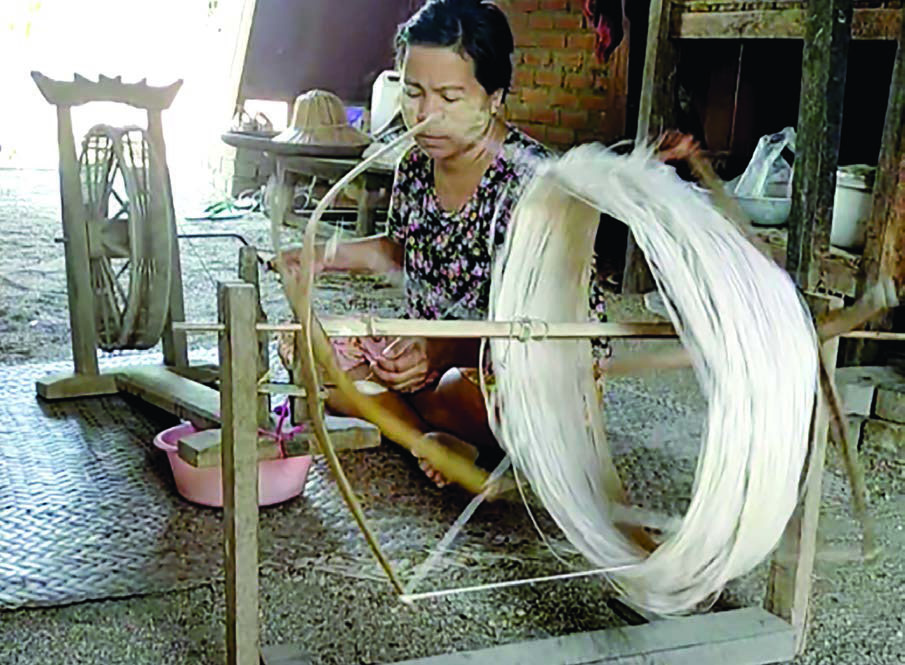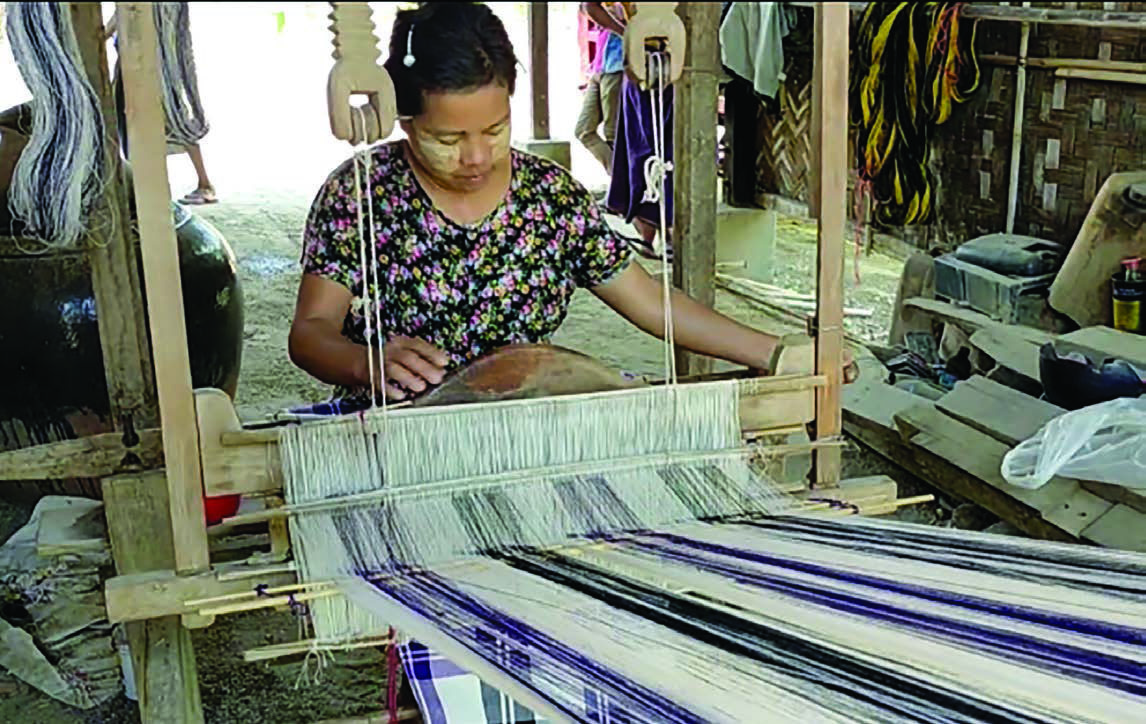TRADITIONAL weaving businesses on a manageable scale in Thaphanchaung Village in Minhla Township, Magway Region, have seen profits amidst COVID-19.
During the pandemic, the clothes and blankets made of natural products from the village’s domestic traditional looming businesses have attracted customers from other regions.
The silver lining of the traditional weaving businesses, which are facing a decline in rural areas, came amidst COVID-19.
Jobs for weavers drying up and rural residents are being forced to turn to other sources for their livelihoods as the businesses have been declining.
Myanmar’s weaving businesses were passed down through generations as family businesses. But now, weaving businesses are only surviving on a manageable scale in rural areas.
There are many steps involved in weaving, from the stage of cotton, to weaving, to producing a variety of designs. Normally, the steps followed are dye, sew, create designs, and weaving. Nowadays, weavers have become rare, and youths are unwilling to take up weaving.
Myanmar’s traditional weaving, from which many rural people relied upon for their livelihoods in the past, is facing extinction as it can not compete with machine-operated weaving.— Ahtet Min Hla IPRD (Translated by GNLM)




